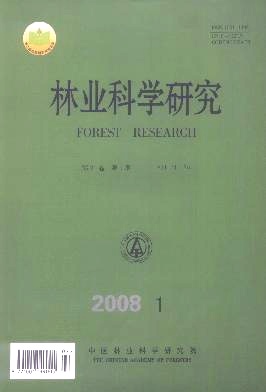A Prelim inary Study on Ecology ofWood Brown2rot Fung i of Postia
-
1.
Institute of App lied Ecology, Chinese Academy of Sciences, Shenyang 110016,Liaoning, China
-
2.
Tieling Forestry Bureau of LiaoningProvince, Tieling 112000,Liaoning, China
-
3.
Forest Research Institute of Tieling, Liaoning Province, Tieling 112000, Liaoning, China
-
Received Date:
2007-01-29
-
Abstract
Wood-inhabiting fungi are the important components of forest ecosystem and p lay a key function during thewood decomposition. Postia can degrade the cellulose and semicellulose of wood and causes a brown-rot. Thebrown-rot remains are necessary for the coniferous forest renewing by their special functions. In this study, the ecological study on Postia from China was carried out. The results showed that the stages of decomposition of fallen decorticated trunkswere closely related with the distribution of species of Postia, and the quotientwas 0. 885. In addition, species in the genus p referred to coniferouswood rather than deciduouswood, about 86% specieswere foundon coniferous wood. The most suitable coniferous hosts were sp ruces and p ines. The most suitable deciduous hostswere birch and pop lar.
-

-
References
|
[1]
|
Roll2Hansen F, Roll2Hansen H. Microflora of sound2lookingwood inPicea abies stems [J]. European J Forest Pathol, 1979, 9: 308- 316 |
|
[2]
|
Eriksson K L, Blanchette, R A, Ander P. Microbial and enzymaticdegradation of wood and wood components [M]. Sp ringer2Verlag,Berlin, 1990 |
|
[3]
|
Solheim H. The early stages of fungal invasion in Norway sp ruce in2fested by the bark beetle Ips typographus [J]. Canadian J Bot,1992, 70: 1 - 5 |
|
[4]
|
Solheim H. Fungal succession in sapwood of Norway Sp ruce by thebark beetle Ips typographus[J]. European J. Forest Pathol, 1992,22: 136 - 148 |
|
[5]
|
Hallaksela AM, Salkinoja2SalonenM. Bacteria inhabiting artificiallyinoculated xylem of Picea abies[J]. Scand J Forest Res, 1992, 7:165 - 175 |
|
[6]
|
Hallaksela A M. Early interactions of Heterobasidion annosum andS tereum sanguinolentum with non2decay fungi and bacteria followinginoculation into stems of Picea abies[J]. European J Forest Pathol,1993, 23: 416 - 430 |
|
[7]
|
BoddyL, RaynerA D M. Ecological roles ofBasidiomycetes formingdecaying communities in attached oak branches [J]. New Phytol,1983, 93: 77 - 88 |
|
[8]
|
RaynerA D M, Boddy L. Fungal decomposition ofwood: its biologyand ecology [M]. JohnWiley & Sons, Bath. , 1988: 1 - 587 |
|
[9]
|
Stenlid J. Community and population biology of boreal decay fungi[M] / /PeglerD N & Boddy L Ing B, Kirk P M. Fungi of Europe:Investigation, recording and conservation. Royal Botanic Gardens,Kew. , 1993: 171 - 180 |
|
[10]
|
Montgomery R A P. The role of polysaccharidase enzymes in the de2cay of wood by basidiomycetes[M] / /Frankland C. Hedger J N ,SwiftM J. Decomposer basidiomycetes: their biology and ecology.Cambridge Univ. Press, London, 1982: 51 - 65 |
|
[11]
|
Swift M J. Basidiomycetes as components of forest ecosystems[M] / / Frankland J C, Hedger J N, SwiftM J, Decomposer basid2iomycetes: their biology and ecology. Cambridge Univ. Press, Cam2bridge etc. , 1982: 307 - 377 |
|
[12]
|
Renvall P. Community structure and dynamics of wood2rotting Ba2sidiomycetes on decomposing conifer trunks in northern Finland[J]. Karstenia, 1995, 35: 1 - 51 |
-
-
Proportional views

-





 DownLoad:
DownLoad: